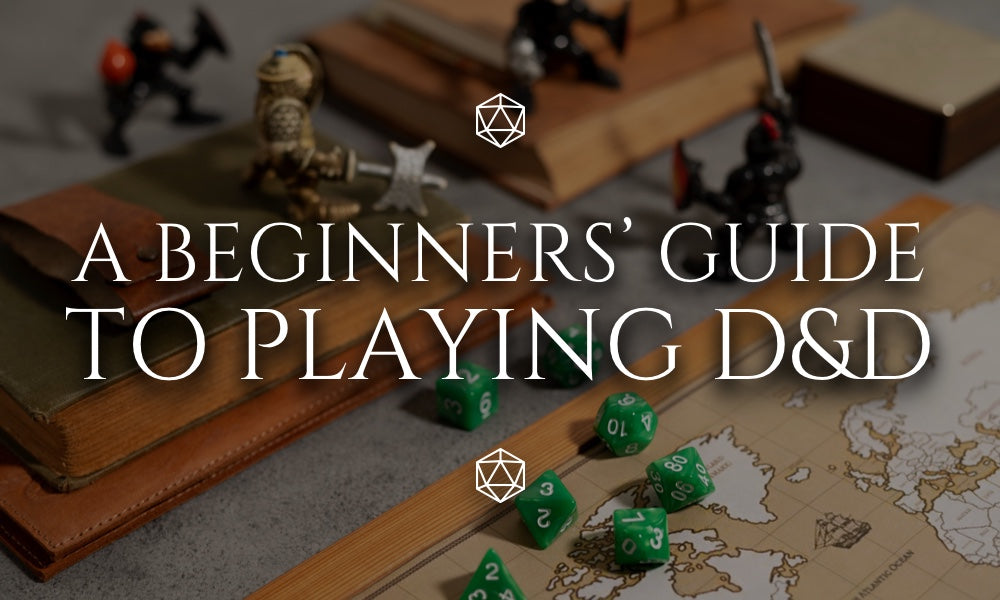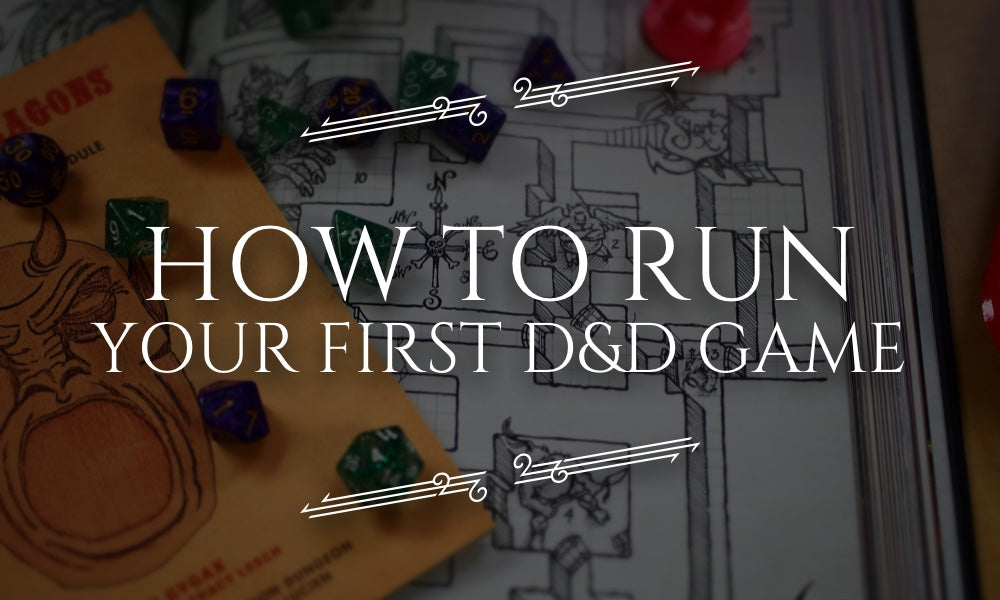
How To Start Playing D&D: A Beginners’ Guide
Welcome to the world of Dungeons & Dragons (D&D)! If you’re reading this, chances are you’re interested in learning how to play this classic tabletop role-playing game (RPG). D&D is a game of imagination, teamwork, and adventure, where you and your friends can create your own stories and explore new worlds. Whether you’re a seasoned gamer or a complete newcomer, this guide will provide you with everything you need to know to get started with D&D.
In this article, we’ll give an overview of D&D from both the DM and players perspective. If you want to drill down into on side of D&D you can follow the links below:
How to run your first D&D game →
How to create a character for your first D&D game →
What is Dungeons and Dragons?
D&D is a tabletop RPG that was first published in the 1970s. In a typical D&D game, one player serves as the Dungeon Master (DM), while the other players control a character“(or "player chara”ter," or PC) each. The DM is responsible for setting the scene and describing the environment, as well as controlling the non-player characters (NPCs) and the enemies that the PCs encounter. The PCs are responsible for deciding what actions to take and role-playing their characters.
D&D is played with dice, a character sheet, and a set of rulebooks. The dice are used to determine the success or failure of a char’cter's actions, and the character sheet is used to keep track of a char’cter's abilities, equipment, and other important information. The rulebooks contain the rules for gameplay and provide guidance for DMs on how to run a game.
Getting started:
To start playing D&D’ you'll need a few things:
-
A group of friends who are interested in playing: D&D is a social game, ’o it’s best played with a group of friends who are all interested in participating’ You’ll need at least one other player (besides the DM) to get started, but a group of four to six players is ideal.
-
The necessary materials: You’ll need a set of dice (a standard set includes a d20, a d12, two d10s (one marked in tens, the other in ones), a d8, a d6, and a d4), character sheets, and a set of rulebooks. You can purchase these materials at a local game store or online, or you can find free, downloadable versions of the character sheets and rulebooks online.
-
A place to play: You’ll need a quiet, comfortable place to play where you can spread out and focus on the game. A kitchen or dining room table works well for most groups.
Creating a character:

One of the most exciting parts of D&D is creating your own character. In D&D, you get to choose your character’s race (such as human, elf, or dwarf), class (such as fighter, wizard, or rogue), and background (such as noble, criminal, or outlander). You’ll also get to choose your character’s abilities, skills, and equipment.
To create a character, you’ll need to follow these steps:
- Choose a race: Your character’s race will determine their physical characteristics, such as their size, appearance, and abilities. Each race has its own strengths and weaknesses, so choose carefully.
- Choose a class: Your character’s class will determine their role in the party and their primary abilities. For example, a fighter is a combat-oriented class, while a wizard is a spell caster.
- Choose a background: Your character’s background will provide context for their motivations and personality. It will also give you access to certain skills and equipment.
- Determine your abilities: Each character has six abilities: strength, dexterity, constitution, intelligence, wisdom, and charisma. These abilities are represented by a score, ranging from 3 to 18, with higher scores indicating greater ability. You can either roll for your ability scores or use a point-buy system to determine them.
- Choose skills: Skills represent your character’s training and expertise in specific areas. Each class has a list of skills that they are proficient in, and you can choose additional skills based on your background.Choose equipment: Your character starts with a certain amount of gold, which you can use to purchase equipment such as armour, weapons, and other gear.
- Finalise your character sheet: Once you’ve chosen your race, class, background, abilities, skills, and equipment, you’ll need to fill out your character sheet. This sheet contains all of the important information about your character, including their abilities, skills, equipment, and other details.
Playing the game:
Now that you’ve created your character, it’s time to start playing the game. Here’s a brief overview of what you can expect during a typical D&D session:
The DM sets the scene: The DM begins the game by describing the location and situation that the PCs find themselves in. This could be a tavern, a forest, a dungeon, or any other location the DM wishes to create.
The PCs decide what to do: Once the scene is set, it’s up to the PCs to decide what actions to take. They might explore their surroundings, interact with NPCs, or engage in combat.
The DM narrates the results: Based on the PCs’ actions, the DM narrates the events that transpire. They may describe the results of an attack, the consequences of a failed skill check, or any other outcome that results from the PCs’ actions.
The PCs continue to act: The game continues in this manner, with the PCs deciding what actions to take and the DM describing the results, until the PCs achieve their goal or the session comes to an end.
Combat:
Combat is an important part of many D&D games. It’s a way for the PCs to challenge and defeat enemies, and it can be a key part of advancing the plot of the game. During combat, the PCs and the enemies take turns attacking and defending. The outcome of an attack is determined by rolling dice and comparing the result to the target’s armour class (AC). If the result is equal to or higher than the target’s AC, the attack hits. If it is lower, the attack misses. Damage is then determined by rolling dice and subtracting the target’s damage resistance (if any).
Healing and rest:
In D&D, characters have hit points (HP) that represent their health and vitality. When a character takes damage, their HP is reduced. If a character’s HP drops to 0, they are unconscious and may be at risk of dying. To heal damage, characters can use potions, spells, or other healing abilities, or they can rest to regain hit points.
Experience points and levelling up:
As characters adventure and defeat enemies, they gain experience points (XP). When a character reaches a certain amount of XP, they “level up,” gaining new abilities and becoming more powerful. At higher levels, characters have access to more powerful spells, abilities, and equipment.
Conclusion:
D&D is a fun and exciting tabletop RPG that allows you and your friends to create and explore your own stories. Whether you’re a seasoned gamer or a newcomer, this guide should provide all the information you need to get started with D&D. So gather your friends, grab some dice, and let your imagination run wild as you embark on your own D&D adventure. Happy gaming!

